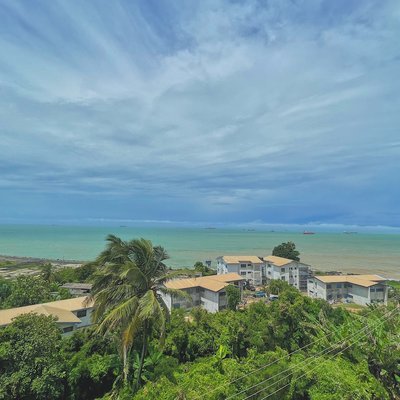Manchester Metropolitan University 2018
 At first, I had no idea where I wanted to go for my placement. Then a student who had previously travelled with Work the World came to my university to deliver a presentation. They spoke about their experience and how much they enjoyed it, which really inspired me.
At first, I had no idea where I wanted to go for my placement. Then a student who had previously travelled with Work the World came to my university to deliver a presentation. They spoke about their experience and how much they enjoyed it, which really inspired me.
I did some research into Work the World, including the countries that they operated in. A few countries stood out, and when I saw that they offered the Philippines, I made my decision.
Work the World helped me get totally prepared. By the end, I knew exactly what to expect from my placement. They answered any and all queries I had, and even put me in touch with students who were going to be staying in the same house as me.

Work the World’s overseas team met us at the airport and took us back to our accommodation. The welcome when we got there was amazing; the head chef had cooked us a feast! The rest of the staff were amazing, and they were always there if we needed help with anything at all.
Every Thursday, we had a BBQ and karaoke evening during which we ate delicious barbecued food cooked by the catering team.
 Our placement hospital was a 20-minute journey away from the Work the World house. To get there we rode in jeepneys, one of the local modes of public transport. Jeepneys are converted Jeeps with benches in the back that, for a few pesos, you can hop on and off at your leisure.
Our placement hospital was a 20-minute journey away from the Work the World house. To get there we rode in jeepneys, one of the local modes of public transport. Jeepneys are converted Jeeps with benches in the back that, for a few pesos, you can hop on and off at your leisure.
In the hospital, I saw many conditions I might never have encountered in the UK. Bell’s palsy was one such condition. In terms of treatment, local staff used a combination of TENS, massages, and resisted face movements, which was fascinating to see.
We also got experience with children who had suffered with meningitis as babies and children who were suffering with cerebral palsy. This was one of my favourite aspects of the placement as all the children had such big personalities!

I also spent time on the wards doing some respiratory treatments. The wards were unlike anything we have in the UK. Family were often the main providers of therapy, as patients had to pay for every point of contact with trained staff. This meant that family members were performing things like suction, which was challenging to watch.
The department also differed from similar departments in the UK, in that patients were typically able to come for treatment more frequently. From what I could tell, treatments were available for as long as they could afford it. This meant that there were patients (mainly stroke patients) who had been going to the clinic for upwards of two years!
 During the weekends, we went travelling with our fellow housemates. We got to see some amazing things! I went to Isla de Gigantes, Antique (pronounced ‘an-tee-kay’) and Boracay Island.
During the weekends, we went travelling with our fellow housemates. We got to see some amazing things! I went to Isla de Gigantes, Antique (pronounced ‘an-tee-kay’) and Boracay Island.
The places I went to gave me perspective on two two extremes; Isla de Gigantes was poor and still recovering from a typhoon that hit a few years prior, but it had beautiful surroundings. We went beach hopping, and rock climbing through a natural cave system while we were there. On the other hand, Boracay was a tourist hotspot, where there were water sports, and popular restaurants and bars.
 There were plenty of other places to visit, such as Cebu, Palawan and Bacolod to name a few. Wherever we went, the local people were friendly and wanted talk with us and take pictures.
There were plenty of other places to visit, such as Cebu, Palawan and Bacolod to name a few. Wherever we went, the local people were friendly and wanted talk with us and take pictures.
I loved every second of my time in the Philippines. It was difficult for me to express just how much this placement meant to me. I made so many friends who I still keep in contact with, both from the Work the World house and my placement hospital.
Going abroad on my own was one of the scariest choices I had ever made. But it turned out to be the most rewarding experience I’ve ever had.

.jpg)






